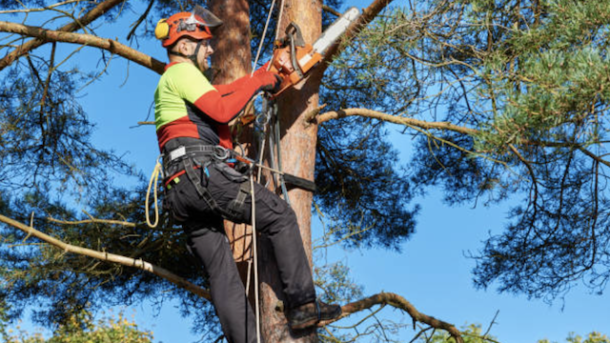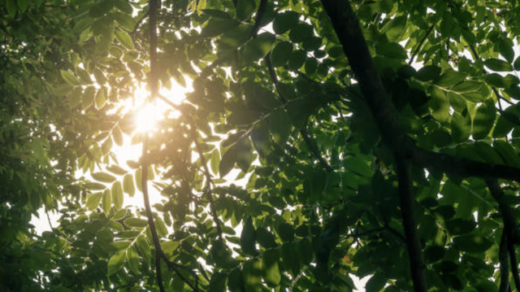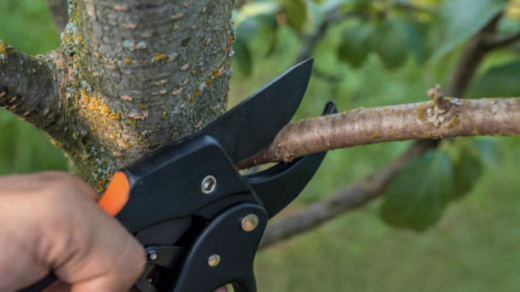When it comes to the question, “Which season is best for tree trimming?” The answer can be vague.
The type of tree will determine when many species can be pruned, along with pest population and activity, local tree and plant diseases and other species of plants and trees in the yard.
With the assistance of a professional arborist in Pennsylvania, you can determine which time of year is the best for pruning your trees to prepare them for success next season and beyond.
Best Season to Prune Trees
Without any other information, PA Tree Trimming recommends tree trimming in the winter. This would be sometime within November to March in Pennsylvania. This season is ideal because the trees are typically dormant, so trimming will cause a minimal amount of damage, if any.
There are many benefits to trimming trees during the winter:
Lower chance of insect damage and disease – Insects and plant diseases are largely inactive in the winter in Pennsylvania. During the rest of the year, everything from insects to fungus can affect a newly trimmed tree because the tree will be the most susceptible and these issues are more common in warmer weather.
Easier to see the shape of the tree when the leaves are gone – Leaves get in the way of your arborist from seeing the complete shape of your tree. When tree branches are bare, it is a lot easier to identify diseased or dead branches and branches that are touching versus those that are just close together.
Trees can heal before spring – By performing major tree trimming in the winter, your trees will have many months to rebuild callus tissue on the ends of the remaining branch collar. By spring season, you’ll hardly be able to tell where the branches were removed, and the tree will be able to devote its energy to produce brand new leaves, fruit or flowers rather than healing new cuts.
Less chance of damaging surrounding landscaping – Most of the surrounding trees and plants will also be dormant during this time, so there is less risk of damaging them. Many times, a tree is surrounded by annual plants in the spring and summer, but there are no plants to be disturbed in the winter months since these annuals already died out.
Do All Trees Need Trimming?
Yes, all trees can benefit from annual pruning. Tree trimming every winter is good for trees, but it is also a precaution for the safety of your landscaping and your family and neighbors. Let us explain:
Trimming Makes the Tree Stronger
Dead and diseased branches are cut off, as are stubs that are susceptible to pests and disease. Limbs that can rub one another are also trimmed so they don’t weaken one another or create an open wound on the tree.
Trimming trees every winter is a good way to get expert eyes on the health of your trees so that early warning signs of decay, disease and insect infestations can be spotted and handled right away.
A Cared-For Tree Serves Its Purpose Better
When a tree is overgrown, it starts to be hard for water and nutrients to get to every limb. This can leave the tree looking scraggly and sick and definitely not doing what it’s intended to do.
Pruned trees, on the other hand, produce more fruit, healthier leaves and better shade. They are fuller and healthier and less likely to cause landscaping issues. So regardless of why you planted a new tree, pruning will maximize the results you want from it.
Trees are More Attractive After Pruning
If the curb appeal of your landscaping is important to you, tree pruning is important! Pruning trees results in an attractive, uniform size and shape. This is very important if you have many similar trees on your property.
Eliminating lower branches and upper branches that grow at improper angles enhances the overall look of the tree while also promoting tree health.
Less Risk of Falling Branches
Tree trimming – from a professional – helps the remaining branches to grow stronger and healthier. Therefore, storms and high winds won’t affect your trees the same way they would an unkempt tree. Your home and family will be safer living under and around trimmed trees.
Another safety concern for large trees is that they block the view of traffic lights, road signs and driveways. Tree pruning, crown raising and other professional tree care services will keep the tree at a manageable size and stop it from blocking various views.
Call PA Tree Trimming for Tree Pruning
Working with a professional arborist in Pennsylvania gives you access to their knowledge on tree trimming. We recommend relying on their years of experience if there are trees on that you’d like to keep healthy for a long time.
An arborist won’t just consider the immediate situation. Instead, an experienced arborist will take time to research your trees and study their unique scenario (including their location and factors that may put them at risk of disease or infestation). After gathering all of the information, an arborist will suggest a long-term plan based on your trees’ needs and stick to that course of action until the goals for your trees are achieved.
This plan could require many years to implement, but rest assured, it will lead to healthy trees that you and your family can enjoy for many years to come.
This type of ongoing maintenance will aid in healthy tree growth, help your landscaping resist plant diseases and enhance flower or fruit production from the trees. It will also fortify your trees so there is less risk of falling trees or limbs.
Being proactive about tree care can save you a lot of money over time too. Preventative care is much more affordable than paying for emergency tree services, storm damage cleanup or curing an ill tree of a disease that has spread out of control (and one that was easily preventable).
If you care about the health of your trees and the curb appeal of your property, trust a certified arborist for tree pruning and maintenance from PA Tree Trimming. Find our service area here. We work with arborists across the entire state of Pennsylvania. Call today!






